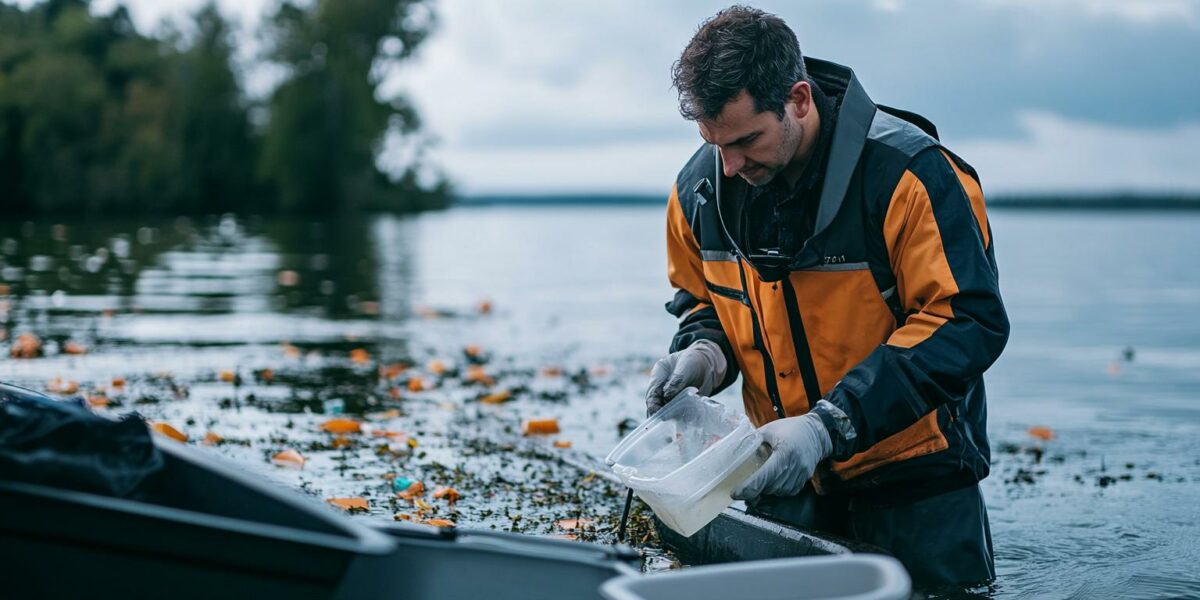Microplastics: A Hidden Menace in the Great Lakes
Every year, an alarming 22 million pounds of microplastics infiltrate the Great Lakes, posing significant environmental and health risks. Two innovative projects by UW-Madison aim to tackle this issue head-on, leveraging cutting-edge technology to identify and mitigate pollution sources.
Assistant Professor Haoran Wei and Wisconsin Sea Grant’s Ginny Carlton lead these crucial initiatives. Their pioneering work focuses on developing advanced detection methods and creating effective strategies to reduce microplastic contamination, ensuring cleaner waters for future generations.
The Great Lakes, a vital freshwater resource, face unprecedented challenges from this persistent pollution. These projects not only address immediate concerns but also pave the way for long-term sustainability and conservation efforts in the region.
By combining scientific expertise and community engagement, these UW-Madison projects exemplify the collaborative spirit needed to combat environmental threats and protect our natural resources from microplastic pollution.
Rob Jackson’s Vision for Climate Change Solutions
In his compelling new book, “Into the Clear Blue Sky,” climate scientist Rob Jackson explores transformative solutions to the global climate crisis. Highlighting the work of fellow scientists, Jackson underscores the urgency and feasibility of these groundbreaking innovations.
Jackson’s narrative is a beacon of hope, showcasing how collective efforts can lead to significant advancements in climate science. He emphasizes three critical areas:
- Carbon capture technologies that can dramatically reduce atmospheric CO2 levels.
- Renewable energy sources that promise to replace fossil fuels.
- Innovative agricultural practices that enhance carbon sequestration.
These solutions, while ambitious, are within reach. Jackson’s book serves as a rallying cry for scientists, policymakers, and citizens to unite in the fight against climate change and safeguard our planet’s future.
The stories of these pioneering scientists inspire action and highlight the potential for collaborative efforts to drive meaningful change. Jackson’s work not only informs but also motivates readers to become active participants in climate solutions.
Collaborative Efforts to Combat Microplastics
The fight against microplastic pollution demands a multi-faceted approach. UW-Madison’s projects exemplify how academic institutions can lead the way in environmental innovation. By fostering partnerships with local communities and leveraging scientific research, they aim to create a cleaner, healthier ecosystem.
Assistant Professor Wei’s team employs state-of-the-art sensors to detect microplastics in water samples. These sensors provide accurate data, enabling targeted interventions and improved water quality management across the Great Lakes region.
Ginny Carlton’s collaboration with Wisconsin Sea Grant focuses on public education and policy advocacy. Through workshops and community outreach programs, they raise awareness about the impact of microplastics and promote sustainable practices to reduce pollution.
These efforts highlight the importance of integrated strategies in addressing environmental challenges. By combining scientific research, community involvement, and policy engagement, we can make significant strides in reducing microplastic pollution and protecting our water resources.
Innovative Solutions for a Sustainable Future
Rob Jackson’s vision extends beyond identifying problems; he offers practical, innovative solutions that can transform our approach to climate change. His work emphasizes the importance of adopting sustainable technologies and practices to create a resilient future.
One of the key takeaways from Jackson’s book is the potential of renewable energy to revolutionize our energy systems. By investing in solar, wind, and other clean energy sources, we can significantly reduce our carbon footprint and mitigate the effects of climate change.
Another critical area is the development of carbon capture and storage (CCS) technologies. These methods can effectively remove CO2 from the atmosphere, helping to stabilize global temperatures and prevent further environmental degradation.
Jackson’s insights underscore the need for a collective effort to implement these solutions. By embracing innovation and fostering collaboration, we can address the climate crisis and ensure a sustainable future for generations to come.



Mia
Rob Jackson’s new book sounds promising. Where can I buy it? 😊
Annabelle_Spark
Thank you UW-Madison for taking the lead on such crucial environmental issues. Keep it up!
TrinityWanderlust
Why isn’t there more coverage on these groundbreaking climate solutions? The public needs to know!
Gabriel
Can someone explain how carbon capture technologies work in layman’s terms?
jeremiahwhisperwind
Great work, but shouldn’t we focus more on preventing plastic production in the first place?
AlexisStardust
Wow, 22 million pounds of microplastics a year? That’s insane! 😱
harper
This is so alarming! How can we as individuals help reduce microplastics in the Great Lakes?